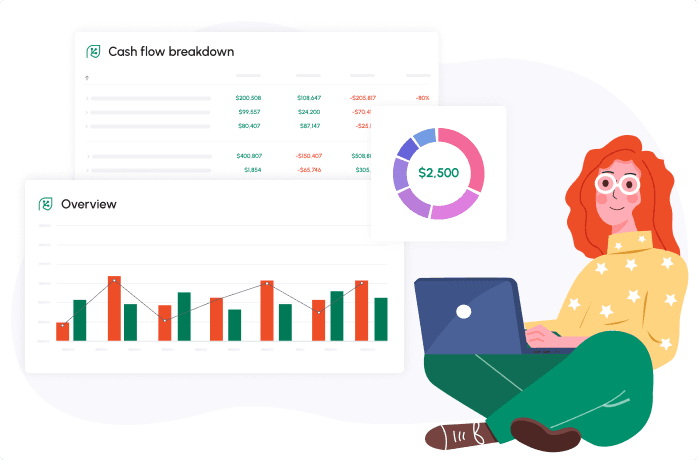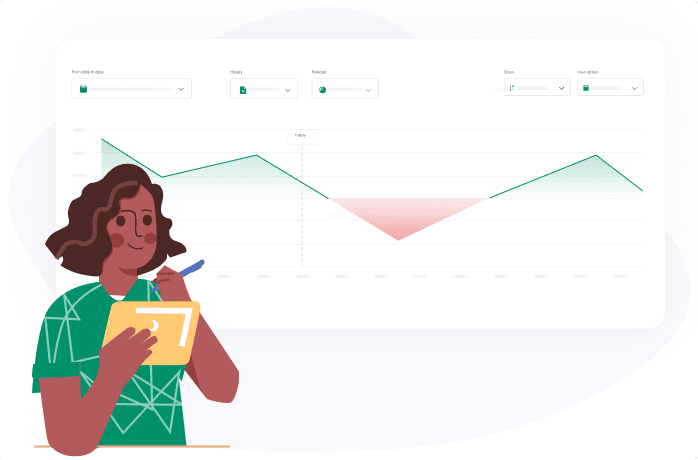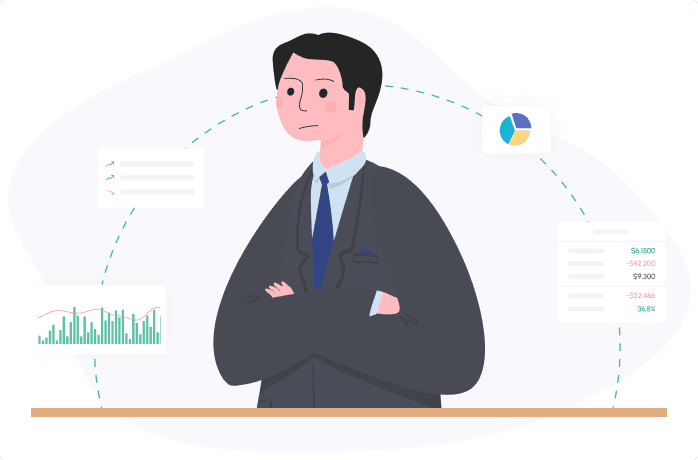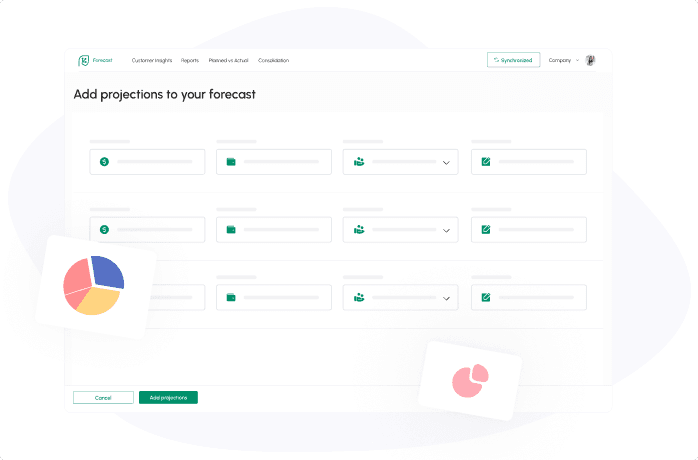

Have you ever looked at your company’s account and asked yourself, “Where is all that money being spent?” That’s where understanding what is a balance sheet becomes powerful: it reveals the complete picture of your financial standing and helps you take control.
Understanding this valuable tool can help you prevent expensive mistakes and make smart choices, whether you’re a new business owner or leading an established company.
In this article, we’ll explain what a balance sheet is, what information it holds, why it matters, and how to understand it even if you don’t handle accounts.
Let’s Start with the Basics: What Is a Balance Sheet?
Here’s a straightforward balance sheet definition:
A balance sheet provides a brief picture of your business’s financial condition on a set date. The report lists your assets and liabilities and what is still available from them (equity).
You might frequently hear that in finance, companies use income and cash flow statements in addition to the balance sheet. However, what makes it so important? It provides accurate and precise information about your business’s performance.
It’s Not Just for Accountants
It’s fine if you haven’t earned a CPA license or love spreadsheets to understand the balance sheet. Solopreneurs and small business owners use it daily to track growth, spot debt risks, and make smart investments.
It’s like your business’s instrument panel flying without it, flying blind. That’s why even new business owners take time to learn how to read one.
Why It’s Called a “Balance” Sheet
Think of your business as a seesaw, with your assets shown on the left and your liabilities (what you owe and what you own) displayed on the right. A balance sheet gets its name because both sides must match in value.
Assets = Liabilities + Equity
This means everything you own (assets) is either financed by what you owe (liabilities) or what you’ve invested (equity). Its name reflects the requirement: both sides must be in balance.
What’s Inside a Balance Sheet?
Now that you know what a balance sheet is, let’s examine its contents.
Assets: What You Own
Assets are anything your business owns that has measurable value. These can be:
- Current assets include cash, inventory, and receivables, all liquid within a year.
- Non-current assets are things a business owns for a long time, like land, equipment, or buildings.
Generally, assets are arranged in this order, beginning with those that can be sold most easily and turning them into cash promptly. A large number of current assets provides your company with the flexibility needed to handle day-to-day needs.
Liabilities: What You Owe
Liabilities represent your financial obligations. These are broken into:
- Current Liabilities – bills, payroll, and taxes due within the next year
- Long-term Liabilities – loans, mortgages, or bonds that stretch beyond a year.
Why does this matter? Keeping liabilities in check helps avoid cash flow issues and reflects strong financial health. A company with more liabilities than assets is at risk, and potential investors or lenders will see that as a red flag.
Equity: What’s Left for You
Your equity is the value left after liabilities are subtracted from assets. Equity typically includes:
- Owner’s capital
- Retained earnings
- Contributed capital
You'd keep equity after selling all assets and paying off debts. Healthy equity means your business is reinvesting and building value. If it’s not growing yet, that’s okay, what matters is knowing where you stand to move forward confidently.

The Simple Formula That Makes It All Work
Now, let’s revisit the formula of a balance sheet—the equation that keeps everything aligned:
Assets = Liabilities + Equity
This equation keeps your finances in check. If the total assets don’t match the combined value of liabilities and equity, there might be an error. Don’t panic. Just take it step by step, and it’ll make sense.
Here’s another example of the balance sheet layout in action, using simple figures to demonstrate how everything stays in balance:
| Category | Amount |
|---|---|
| Assets | $100,000 |
| Liabilities | $60,000 |
| Equity | $40,000 |
Here, the business has total assets of $100,000, total liabilities of $60,000 and equity of $40,000. Things are arranged exactly as they should be.
Getting familiar with the formula for the balance sheet isn’t just about ticking a box; it’s a key step to keeping your business honest, efficient, and financially healthy.
Why Should You Even Care About Balance Sheets?
You may wonder, “Isn’t this something my accountant should take care of?” Sure, but understanding your numbers keeps you in control. Here’s why a balance sheet matters:
- It helps you make strategic financial decisions
- Boosts credibility with investors and lenders
- Highlights early warning signs like debt overload or shrinking equity
- Tracks your company’s growth over time
A well-maintained company balance sheet example can be the difference between securing funding and getting denied. Studying more than one example of balance sheets lets you spot trends and strengthen your financial planning. It also builds investor trust and shows you're responsible for managing your finances.

How to Read a Balance Sheet Without a Finance Degree
You don’t need a financial background to figure out your balance sheet. You only have to find the relevant sources and understand what the data shows you. Here's a four-part process to see how you stand financially.
A Step-by-Step Walkthrough
- Start with Total Assets
Your business owns assets, such as cash, inventory, equipment, etc.
Ask:
- Are total assets growing?
- Do current assets cover current liabilities?
- Is your asset mix balanced (not too much equipment, not too little cash)?
- Examine Liabilities
These are what your business owes.
Focus on:
- Is your current cash flow enough to cover upcoming short-term obligations?
- Are liabilities growing faster than assets or revenue?
- Is debt being reduced or increasing?
- Evaluate Equity
Equity = assets minus liabilities. It shows your net business value.
Ask:
- Is equity increasing?
- Are retained earnings growing?
- Is there a healthy balance between reinvestment and withdrawals?
- Sanity Check with Ratios
Use key ratios to validate your financial health once you review assets, liabilities, and equity.
- Current Ratio: It assesses how well a business can use its current assets to settle short-term debt.
- Rapid ratio: This ratio examines liquidity more closely. It skips the inventory to assess if quick assets can cover short-term debts.
- Debt-to-equity ratio: This ratio helps measure financial leverage by comparing how much of the company’s funding comes from debt versus what’s provided by shareholders.
With these ratios, liquidity, solvency and ability to handle challenges can be better understood.
Common Mistakes Beginners Make
To keep records clear, avoid mixing business and personal money. Overvaluing assets, like vehicles that depreciate, and ignoring short-term debts can also harm cash flow. Avoiding these mistakes supports smarter financial decisions.
The Differences Between Other Financial Statements and the Balance Sheet
To fully understand a balance sheet, you must know how it compares to other financial statements.
vs. Income Statement
The income statement is like a video; it shows how your business performs, tracking earnings and expenses over time. The balance sheet is more like a photo; it captures your financial standing at one specific moment, showing what you own, owe, and what’s left. Comparing an example of the balance sheet with your income statement connects short-term performance to long-term health.
vs. Cash Flow Statement
A profit on the income statement doesn’t guarantee available cash; that’s what the cash flow statement reveals. A company's financial health can be inferred from its income statement and balance sheet.
Can You Make One Yourself?
Absolutely. And don’t worry, you won’t need to summon an accountant every time. With tools like QuickBooks, Excel, or Cash Flow Frog, you can build your example of balance sheets in minutes. Simply input your asset, liability, and equity details, then let the formula for the balance sheet do the work.
- Assets: split into current and non-current
- Liabilities: current and long-term
- Equity: retained earnings and owner contributions
Use a simple balance sheet example layout as your guide, and let the balance sheet formula keep everything aligned.
Balance Sheets in Practice: When and Why to Use Them
Balance sheets are useful when submitting a funding application, benchmarking, deciding to sell, and preparing your tax return.
Want to see how the pros do it? Looking at a company balance sheet example from major players like Apple or Amazon can give you a solid benchmark for assessing your own financials.
Do You Really Need One?
In short, yes. Any business, regardless of size, may benefit from a balance sheet.Here’s why:
- It protects your financial future.
- It keeps your business transparent.
- It strengthens investor and lender confidence.
Even households can benefit. Knowing what does a balance sheet show can help you manage debt, track net worth, and plan your retirement with greater confidence. And when you know exactly where you stand, you’re not just guessing anymore, you’re steering confidently.

FAQ
Related posts:
You may be interested:
New:












